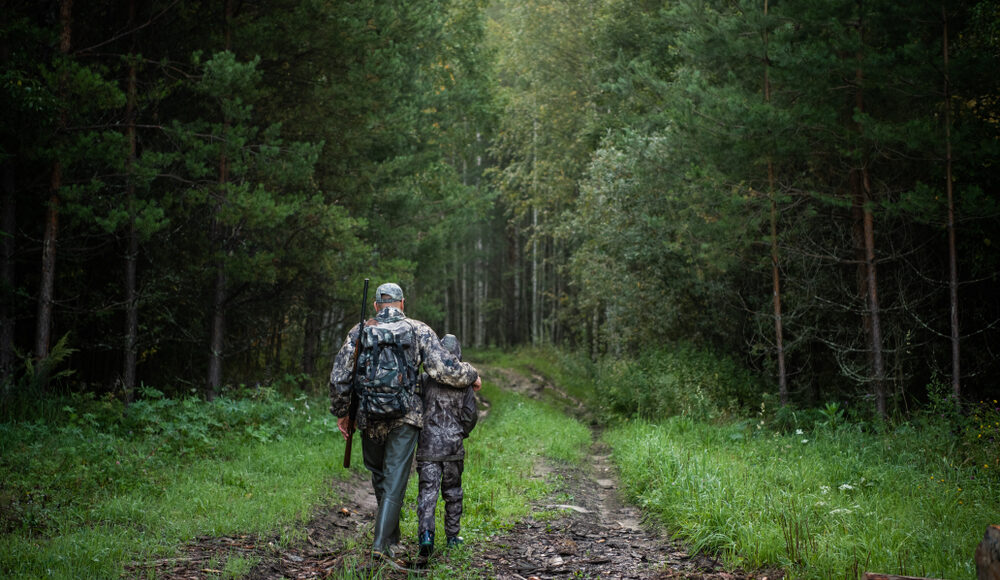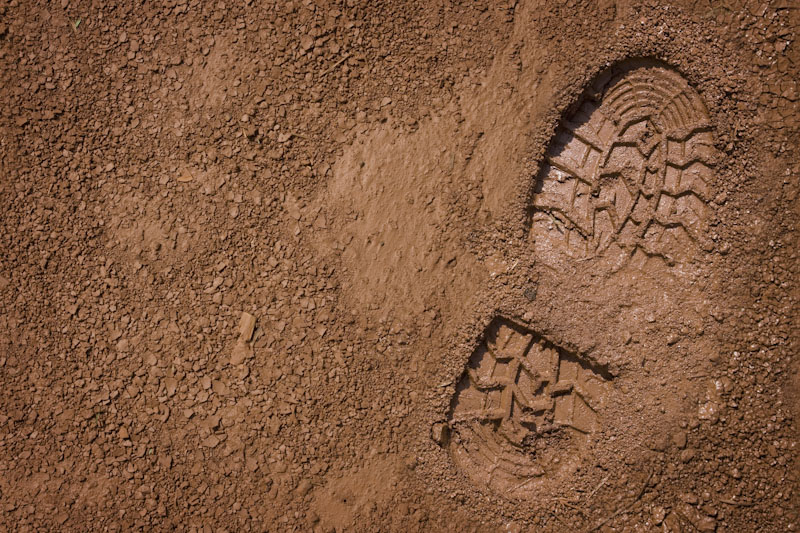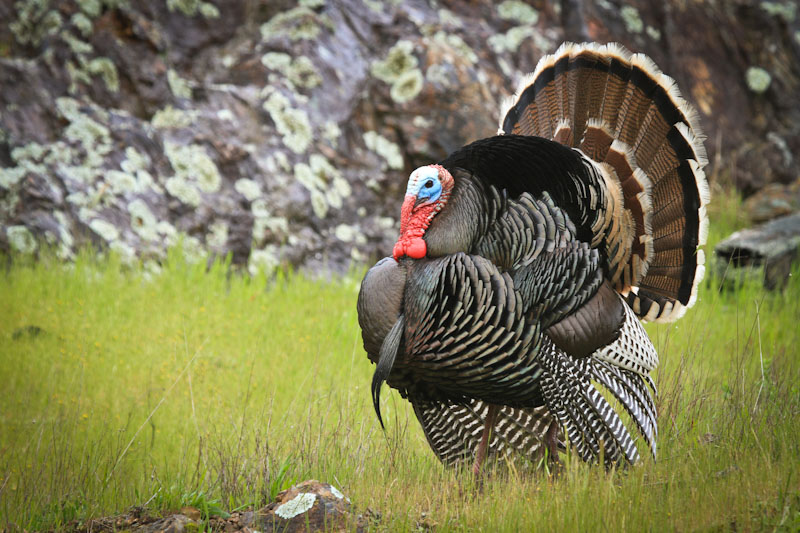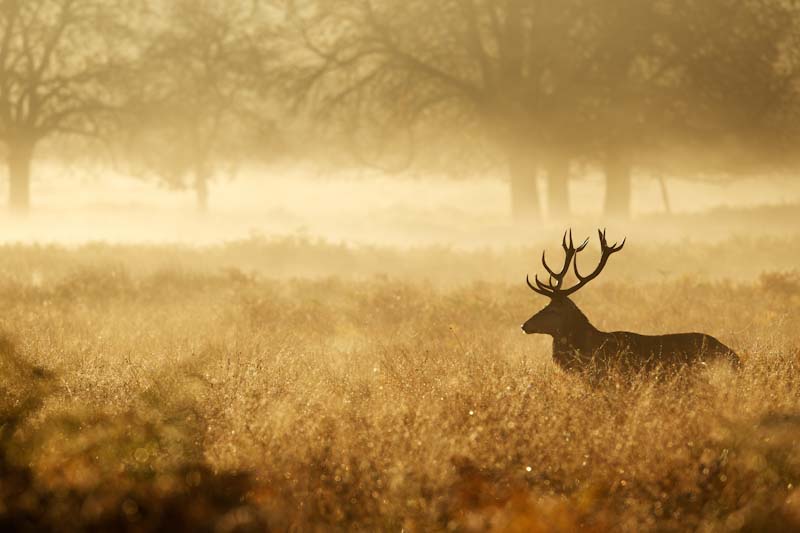I know a lot of hunters, and they all have their own reasons for hunting, although most of them have chosen this activity since they prefer to hunt instead of buying meat from the grocery store.
Hunting is an important skill for preppers to ensure subsistence when the supply chain breaks. Being a crucial skill to one’s survival, it makes sense to pass down their knowledge to the next generation.
Compared to other skills, teaching a kid how to hunt is a serious business because taking an animal’s life can be a stressful event. Adults often forget that while such an activity is a rewarding experience, it also requires a lot of preparation for the first-time hunter, especially if children are involved.
The following lessons come from years of experience in the field with my nephews and their father. My brother is one of the most skillful hunters I know, and as a devoted father, he spent a lot of time teaching his sons about hunting. Before we move forward, we should all remember that kids are different, so these examples and suggestions should not be considered an absolute must when it comes to your own children.
Safety comes first
A lot of parents nowadays have a parenting style that’s less strict compared to what we had to “endure” back in the day, and they half-ass a lot of things. While you can doge certain things and get away with a lot of stuff when it comes to parenting, there’s no half-assing when it comes to firearms training and safety.
You should always be truthful about guns when introducing them to children, and you should tell them they are meant to kill and can be dangerous tools if handled poorly or with ill-intent. If you are a gun owner, your kid has probably already seen a firearm in your home, so they’re not totally unfamiliar with this topic.
However, your education should always start without a firearm in the room. Ask your children to tell you what they already know about guns, and through this open conversation, you will be able to provide information that covers the gaps they may have. You will also be able to empower them and increase their confidence if you have an open, honest discussion.
The next step should involve teaching the basic rules of firearms safety:
- Each gun should be treated as if it’s loaded
- Always keep the muzzle pointed in a safe direction
- The finger should stay off the trigger until they are ready to shoot
- Make sure you are able to identify the target properly, but also what’s behind and in front of it.
After this firearms safety session, you can bring out the gun you bought for your child’s first hunt. Show him/her that the gun is unloaded and teach them how to visually inspect the chamber after you’ve shown them how it’s done.
Next, you should explain the parts of the gun and how they work. Have patience and explain everything before handling the gun to them. While you do so, observe if they follow the mentioned safety rules and how they are handling it. You will need to show them how to handle the firearm and how it’s meant to be used.
As the teacher, your role is to make sure the kid follows all of the above, and you have to provide him with enough confidence to always ask questions. Only after this can you bring him to the range and bring ammunition for his hunting firearm.
In preparation for hunting, I advise you to enlist your kid in an education course. The good news is that there are various such courses online that are state-approved and will make it possible for your children to get a hunting license. It all depends on the state you live in, and I usually recommend HunterCourse.com.
These courses are through, and at the end, the child will have to pass an exam in order to obtain their hunter education card. I honestly believe these are great resources, and they provide proper information for children. It will also help them when they reach adulthood because they will be required to show proof of a hunter education certification if they seek to obtain a hunting license.
Mental preparation is required
Children love animals, and they may decide to hunt just because they want to mimic their parents. They will tell you they want to shoot a deer, but they probably don’t understand what hunting is all about.
If your kid wants to accompany you during your next hunting trip, the best thing you can do is be honest with him/her and explain in detail (even the gross stuff) what they will have to do.
Explain your reason for hunting, where your food comes from, and the joy and pleasure you seek from being out in nature or bonding with friends or family. I can’t know your reason for hunting or the motivation that drives you, but you should talk about them with your children. This will help them have a better understanding of what hunting is, and they will become aware is not only about killing an animal.
Before going on their first hunt, my nephews were shown pictures of deer with various anatomy diagrams so that they would learn where to aim and understand what a kill shot is. The pictures depicted deer facing different directions, and my brother showed them where the aiming point should be located in relation to the orientation of the animal.
Also, he explained to them that sometimes the animal doesn’t die immediately from a shot, and they will have to track the animal. He made this clear so that the children would understand that it’s their responsibility to take an ethical shot. The stress of a bad shot is heavy on first-time hunters and not being able to take an animal’s life quickly and “painlessly” can have a lasting impact.
The children should be aware that in case of a bad shot when they track the animal, they will be exposed to a heart-wrenching image, and the sounds the animal makes will cause them additional distress. Also, make sure they understand that when this happens, you will be the one handling the situation, and they won’t have to step in to finish the job. They will certainly be overwhelmed with emotions, and they will need time to adjust to the situation, so make sure you are the one finishing the job.
Also, tell them that hunting is not only about pulling the trigger and killing the animal. They should know what is expected from them (if they decide they still want to be part of future hunting parties), and they will need to learn how to clean the animal as well.
My nephews saw pictures of dead deer, and they watched a few videos on how to clean the animal. They were told they wouldn’t take part in this activity, but if they are serious about hunting, they should be present and observe how it’s done. It was a good learning opportunity for them and also the perfect occasion to see if they have the stomach for it.
Also, my brother prepared a meal using the meat from the animal they killed, and he told everyone at the table that Joseph, his eldest, was the one that provided the meat. It was a proud moment for him and everyone there.
Practice makes perfect
Before you take your kid to the range, you should make sure you have all the equipment ready (eye protection, clothes, etc.). Since most rifles aren’t fit for children, they can be accommodated to fit. Once your child gets behind the gun, you can explain body positioning and eye relief. You will notice if he/she can’t see through the scope, and you will need to fit the gun.
You will have to look for ways to adjust the length of pull, cheek weld, and eye relief. Find a rifle with pieces that can be removed from the buttstock, helping you adjust the length of pull. Regarding eye relief, perhaps you can move the whole scope back or move the scope back in the rings.
Also, there are aftermarket cheekpieces that you can attach to the rifle so that the child can look through the scope properly.
Some will pick a large caliber gun, but good shot placement and quality ammunition should be the first choice for first-timers rather than going with something big. If you provide a rifle with a strong recoil, not only it’s not easy for the child to use, but it may also discourage him/her from wanting to hunt. My nephews started their whitetail hunts with a .223 Remington.
Once you have zero confirmation, you can practice shooting from different stances and different distances. Start at 50 yards on steel or paper targets, and after the kid can hit the targets steadily, you can increase the range.
My nephews had fun shooting at the range, and during their first practice sessions, they went back to 200 yards. My brother helped them understand bullet drop compensation and how to handle the wobble zone.
During the training session, they also had the chance to shoot from different positions as it was explained to them that depending on where and how they will be hunting, they should be comfortable shooting from various positions.
The prone position or laying flat on your belly are stable and excellent positions for learning marksmanship fundamentals, although the terrain and obstacles encountered in the field make prone shooting rather difficult. It’s best to practice positions you will encounter during your hunting trips.
Also, they should be taught what their role is, besides aiming and pulling the trigger. Everyone should be scanning for deer, and it will go much easier if you scan half of the area and your child scans the other half. They should listen to you and not rush into it. They should be confident and pull the trigger only when they believe they have a good shot.
The day of the hunt
As you can imagine, your kids may have unrealistic expectations when it comes to hunting, and they believe their first trip will be a successful one. You should prepare them for disappointment and explain that you may spend all day without even seeing a deer.
It’s also recommended to start their first hunt using a blind since they have less patience than adults, and when it comes to food and entertainment, the blind provides the perfect cover. The children will be able to move around without startling the wildlife. Make sure you have plenty of water and snacks, and both you and the child have comfortable chairs.
Set the gun up and let your child practice shooting position so that he/she will be ready when the time comes to take the critical shot. If you spot a deer, you will observe how your child will control his/her emotions. Range the deer and establish if the child can take an ethical shot. From there is just like the range. When they pull the trigger, you should spot where the deer was shot (or wasn’t) since your next steps are determined by that shot.
If they did manage to make a clean shot and the animal fell close to the spot where it was shot, give time to your child to experience the emotions and excitement of the moment. Tell them to take a few minutes before going out since this will allow the animal to die. Depending on the size of the animal, it may take a few minutes until it bleeds out.
Approach the animal with caution because, in some cases, the animal may not be dead, and you may have to act quickly to deliver a final shot. If the animal is dead, you can move forward and field dress the deer or transport it back to your processing place.
Concluding
While teaching your child how to hunt is a rewarding experience for you and him/her, it’s also something you need to properly plan for, and you should make sure the child understands what hunting is all about and what’s expected of him/her. It will be an important lesson for them, and even though they may not turn into the expert hunters you expect them to become, at least they will have the knowledge to hunt for their own meal during a survival scenario.









